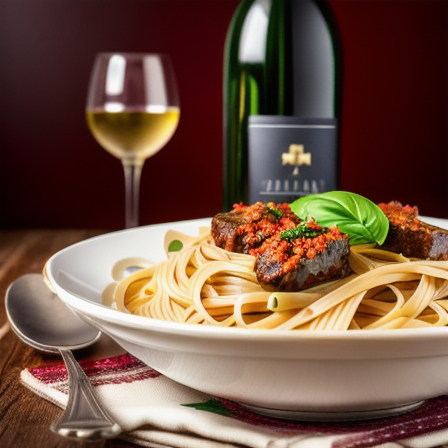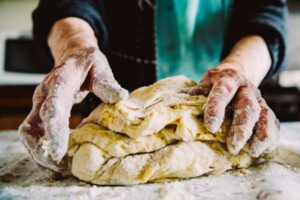Introduction to Italian Traditions and Festivals
Italy is a country known for its rich cultural heritage, which is deeply rooted in its traditions and festivals. From the colorful Carnival of Venice to the religious celebrations of Easter and Christmas, Italians take great pride in their cultural heritage and love to celebrate it with great enthusiasm and passion.
Traditions and festivals play a vital role in Italian culture, connecting people with their past, present, and future. They are a reminder of the country’s history and legacy and serve as a way to bring people together to celebrate and share their love for their country and its customs. In Italy, traditions are not just limited to religious or national events but also extend to everyday life. From the way Italians greet each other to the food they eat, traditions are a part of their daily routine.
Food, music, and art are essential components of Italian celebrations. Italians love to celebrate with good food, and traditional dishes often hold great significance in Italian culture. For example, on Christmas Eve, many Italians abstain from meat and instead eat a feast of seafood dishes, known as La Vigilia. Similarly, during Easter, many Italians enjoy a traditional cake called Colomba di Pasqua, which is shaped like a dove and represents peace and hope.
Music and art are also integral parts of Italian celebrations. Many festivals feature live music performances by local artists, and art exhibitions are often held in conjunction with traditional events. For example, the famous Venice Biennale, an international art exhibition, takes place in conjunction with the Carnival of Venice, and the city comes alive with music, dance, and art.

Italy is a country with a rich and diverse cultural heritage that is celebrated and cherished through its traditions and festivals. Whether you’re attending a religious celebration or a food festival, you’ll find that Italians are passionate about their traditions and love to share them with the world.
By participating in Italian traditions and festivals, you can gain a greater appreciation for the country’s history and legacy, as well as its vibrant culture and customs. So, whether you’re a local or a visitor, take the time to explore and experience the beauty and richness of Italian traditions and festivals.

Did You Know?
- Italy is home to over 450 different types of pasta, and each region has its own unique pasta dishes.
- The Carnival of Venice dates back to the 12th century and is one of the oldest and most famous carnivals in the world.
- The traditional Italian recipe for pizza margherita was created in honor of Queen Margherita of Savoy in the late 1800s.
“Italy is a dream that keeps returning for the rest of your life.” – Anna Akhmatova
Niche Topics in Italian Traditions and Festivals
Italy is a country with a rich cultural heritage and a long history of traditions and festivals that have been celebrated for centuries. While some of these celebrations are well-known around the world, such as the Carnival of Venice or the Palio di Siena, there are also many lesser-known festivals that are just as fascinating and exciting to experience.
The Palio di Siena
The Palio di Siena is a horse race that takes place twice a year in the city of Siena, Tuscany. The race dates back to the 17th century and is held in the Piazza del Campo, the main square of the city. Ten horses and riders, each representing a different Contrada or neighborhood of the city, compete in a thrilling race around the square.
The Palio is not just a horse race, but a deeply ingrained tradition that is part of the identity of the people of Siena. The rivalry between the Contrade and the preparations for the race begin months in advance, with each neighborhood organizing events and celebrations to show their pride and support for their horse and rider. The race itself only lasts around 90 seconds, but the atmosphere in the city during the days leading up to it is electric.
The Carnevale di Venezia
The Carnevale di Venezia is one of the most famous and elaborate carnivals in the world. It takes place in the beautiful city of Venice and lasts for two weeks, ending on Shrove Tuesday, the day before Ash Wednesday and the beginning of Lent. The carnival dates back to the 12th century, when the people of Venice would dress in masks and costumes to celebrate their freedom and anonymity.
The masks worn during the carnival are an integral part of the celebration, and are often elaborately decorated and very expensive. Each mask has a different meaning and symbolism, and they are worn not just during the carnival but also at other events and parties throughout the year. The Carnevale di Venezia is a unique and magical experience that should be on every traveler’s bucket list.
The Religious Processions of Holy Week in Sicily
The Holy Week processions in Sicily are a deeply spiritual and emotional experience for the people of the island. The processions take place in the week leading up to Easter and involve elaborate floats and statues depicting scenes from the Passion of Christ. The processions are held in many towns and cities throughout the island, but some of the most famous ones take place in Enna and Trapani.
The processions are a way for the people of Sicily to express their faith and devotion, and they involve many hours of preparation and rehearsal. The floats and statues are often very old and valuable, and are carried through the streets by groups of men who have been chosen for their strength and devotion. The atmosphere during the processions is solemn and reverent, and it is a unique opportunity to witness a deeply spiritual event.
The Festival of the Snake Catchers in Cocullo
The Festival of the Snake Catchers in Cocullo is a unique and fascinating festival that takes place in the small town of Cocullo, in the Abruzzo region. The festival dates back to pagan times and is a celebration of the local patron saint, San Domenico. During the festival, live snakes are captured from the surrounding hills and placed on a statue of San Domenico, which is then paraded through the town.
The festival is a way for the people of Cocullo to honor their patron saint and to celebrate their local traditions. While it may seem unusual to outsiders, the festival is a deeply ingrained part of the local culture and is taken very seriously by the people of the town. The festival is a unique and unforgettable experience that is not to be missed.

Lesser-Known Details of Italian Traditions and Festivals
Italy is a country steeped in tradition, and its festivals and celebrations reflect that rich cultural heritage. While many of these traditions are well-known, there are also numerous lesser-known details that make them even more fascinating. Here are some examples:
Regional Variations in Italian Christmas Celebrations
While Christmas is celebrated throughout Italy, there are a number of regional variations that make the holiday even more special. For example, in Sicily, it is traditional to set up elaborate Nativity scenes known as “presepi,” while in Naples, children receive gifts from La Befana, a kind old woman who delivers presents on the night of January 5th. In the mountainous region of Trentino-Alto Adige, it is customary to make “zuppa di fagioli,” a hearty bean soup served with bread and cheese, on Christmas Eve. These regional variations add to the richness and diversity of Italy’s Christmas traditions.
The Symbolism and Meaning Behind the Different Types of Pasta Eaten During Easter
Easter is a major holiday in Italy, and it is celebrated with a variety of traditional foods. One of the most important is pasta, which is typically served on Easter Sunday. However, the type of pasta that is served varies depending on the region. In Naples, for example, it is customary to serve “pastiera,” a sweet and creamy pie made with ricotta cheese and grains of wheat. In Sicily, “cassata” is a popular dessert made with sponge cake, ricotta, and candied fruit. These traditional dishes are steeped in symbolism and meaning, and they serve as a reminder of the importance of family and community during the holiday season.
The Tradition of the ‘Ndocciata, a Fiery Torch-Lit Procession in Abruzzo
The ‘Ndocciata is a spectacular procession that takes place in the town of Agnone in the Abruzzo region of Italy. It involves the lighting of hundreds of torches, which are carried through the streets by local residents. The ‘Ndocciata has its origins in pagan rituals that were meant to ward off evil spirits, and it has been celebrated in Agnone for more than 2,000 years. Today, the procession is a symbol of community pride and a testament to the enduring spirit of the people of Abruzzo.
The Origins of the Festival of Sant’Efisio in Sardinia
The Festival of Sant’Efisio is one of the most important religious celebrations in Sardinia. It takes place each year on May 1st, and it involves a procession of thousands of people dressed in traditional costumes. The festival has its roots in the 17th century, when the people of Cagliari prayed to Saint Efisio to protect them from a plague. The plague never came, and the people of Cagliari have been honoring Saint Efisio ever since. Today, the festival is a celebration of Sardinian culture and a testament to the enduring faith of the people of the island.
Italy’s traditions and festivals are a testament to the country’s rich cultural heritage. From the regional variations in Christmas celebrations to the symbolism behind the different types of pasta eaten during Easter, each tradition has its own unique story to tell. Whether you are a native Italian or simply a lover of Italian culture, these lesser-known details serve as a reminder of the beauty and diversity of Italy’s traditions and festivals.
Image credit: Kimberly Vardeman on Flickr



